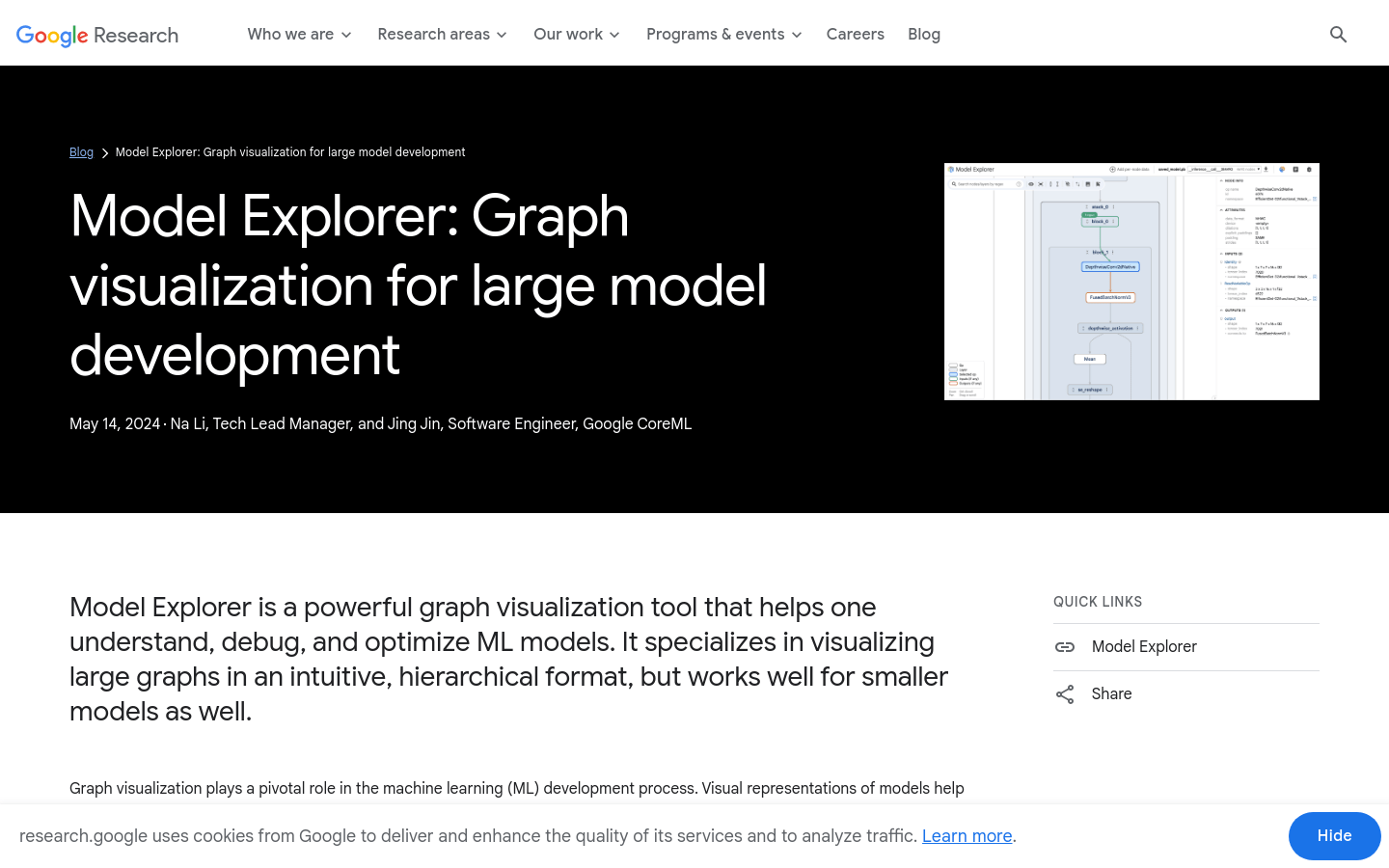

Model Explorer
Overview :
Model Explorer is a machine learning model visualization tool developed by Google. It specializes in visualizing large graphs in an intuitive hierarchical format, and it's also suitable for smaller models. This tool is particularly helpful in simplifying the deployment process of large models on edge platforms by visualizing the conversion, quantization, and optimization of data. Model Explorer leverages graphic technologies used in 3D gaming and animation production, such as instanciation rendering and multi-channel signed distance fields (MSDF), and adapts them for machine learning graph rendering. It supports various graph formats, including those used by JAX, PyTorch, TensorFlow, and TensorFlow Lite. Model Explorer makes large models easier to understand through its hierarchical views and ability to navigate complex structures.
Target Users :
Model Explorer is suitable for machine learning researchers and engineers, especially developers who need to deploy models on resource-constrained devices. It helps users understand the model structure, debug errors during the model conversion process, and optimize model performance through its intuitive graphical interface.
Use Cases
Researchers use Model Explorer to understand the architecture of the MobileBert model.
Engineers use Model Explorer to debug model conversion errors from PyTorch to TensorFlow Lite.
Developers use Model Explorer to optimize model performance by quickly identifying and resolving issues through visualization.
Features
Supports multiple graph formats, including JAX, PyTorch, TensorFlow, and TensorFlow Lite.
Hierarchical views help users understand model architecture and debug conversion errors.
Instantiation rendering and multi-channel signed distance fields (MSDF) technology improve rendering performance.
Provides a side-by-side comparison mode to help compare changes during model conversion.
Allows users to overlay node data on the graph to quickly identify performance or numerical issues.
GPU-accelerated graphics rendering for a smooth 60 FPS user experience.
Interactive system that enables users to progressively expand or collapse layers to view the internal structure and connections of the model.
How to Use
Visit the Model Explorer website and download the installation file.
Upload or import the machine learning model you want to visualize.
Browse the model structure using the hierarchical view by progressively expanding or collapsing layers.
Use the side-by-side comparison mode to compare the differences before and after model conversion.
Overlay node data on the graph to analyze performance or numerical issues.
Deeply understand the internal structure and connections of the model through interactive operations.
Adjust the view and data display as needed to optimize the model architecture and performance.
Featured AI Tools

Free Shared GPT Accounts
This website offers a service for sharing GPT accounts. Users can access GPT services directly by clicking the account ID displayed on the page. Each account has usage limits and allows password setting to isolate conversations, ensuring privacy. This service is particularly suitable for users who frequently engage in conversations with GPT, especially those who wish to protect their conversation content from unauthorized viewing.
AI tools website directory
2.0M
English Picks

Cursor.sh
Cursor is the IDE of the future, built specifically for paired programming with powerful AI. Its features include conversational code querying, code suggestions, code changes, natural language editing, code generation from scratch, and error debugging. Cursor is suitable for a variety of use cases and can help developers build software faster. It is trusted by tens of thousands of engineers, including engineers from some well-known companies.
AI development assistant
246.7K














